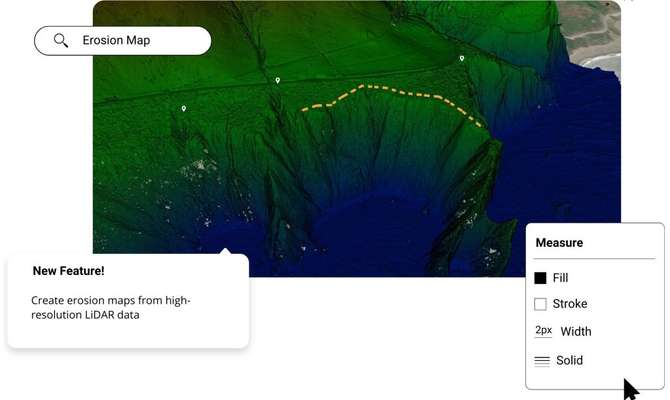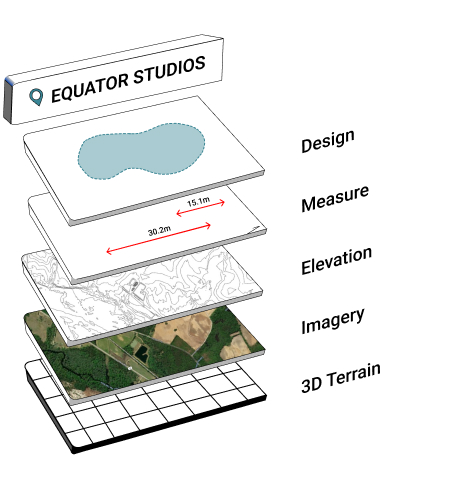Erosion Mapping
Erosion Mapping
Use the latest LiDAR data online to support erosion mapping projects. Export elevation data, or create erosion maps right in Equator!

Join other leading designers on Equator.

Create an erosion map in Equator
- Navigate to your location of interest
Add contours, LiDAR, or hillshades to your site
- Add markups, icons and measurements to your erosion map
- Take detailed measurements of the erosion site
Share your erosion map with others online or in print
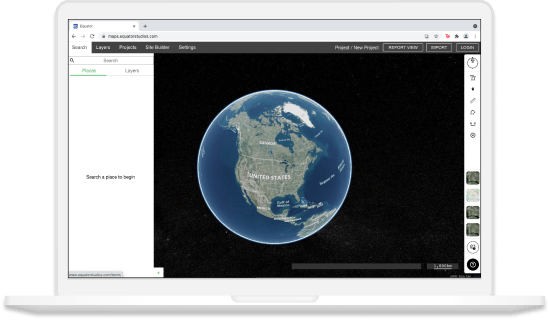
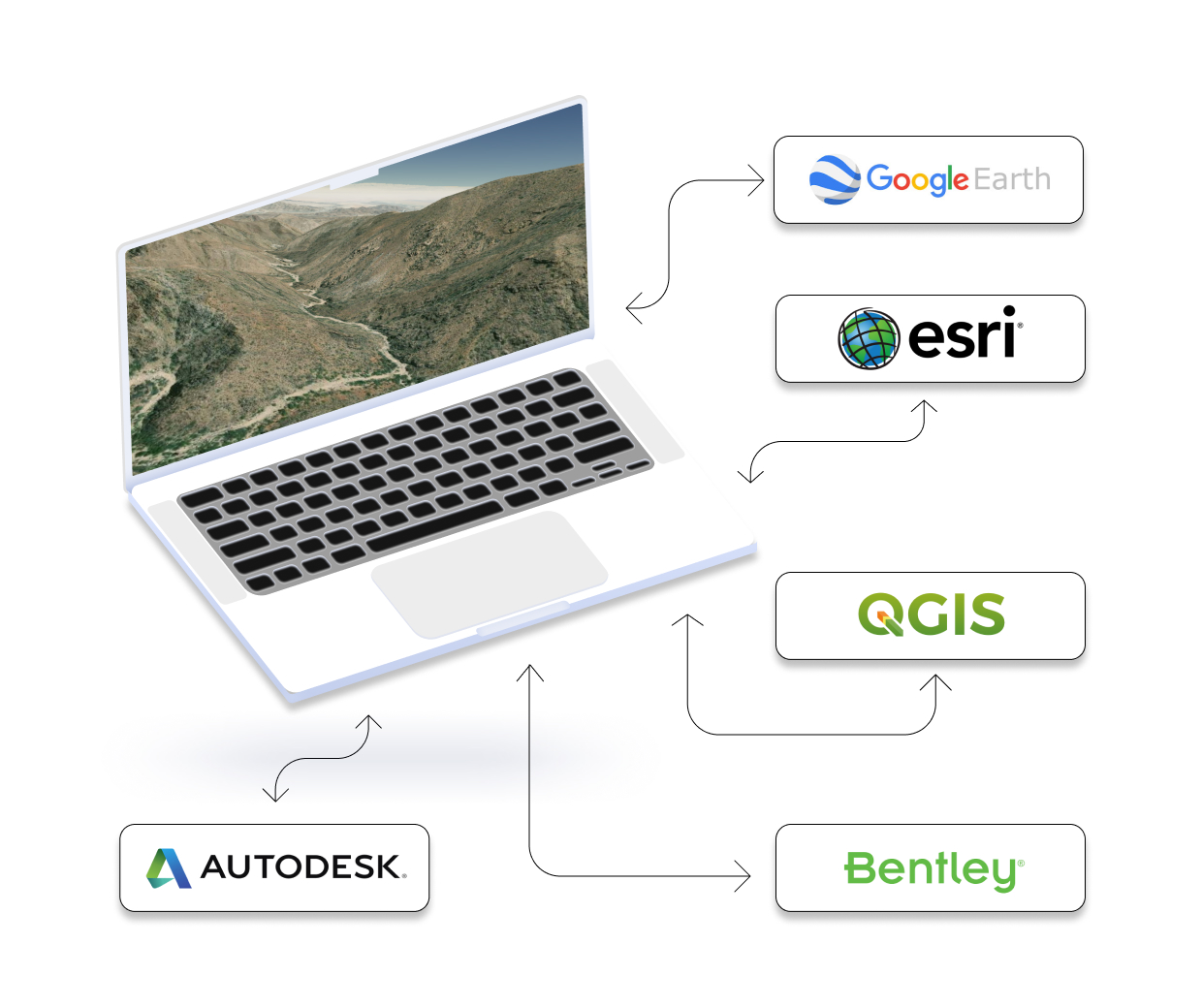
Integrate your map with other software
We’ve made it easy to integrate into your current workflow to get you up and running without friction.
Equator supports popular GIS and CAD data formats, so map layers like LiDAR can be easily exported to Civil 3D, ArcGIS, Google Earth, or other platforms.
How to Get Started
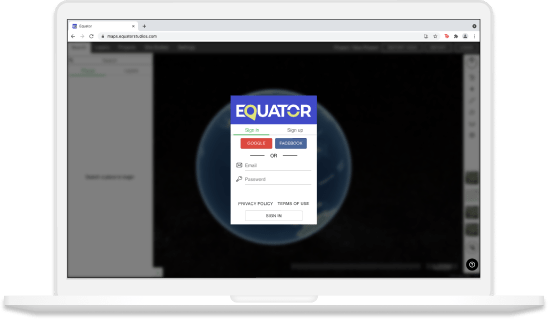
Step 2
Create an account by signing up with your favorite email address.
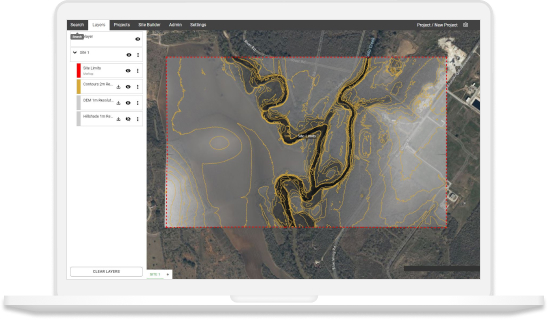
Step 3
Use the built-in search engine and design tools to find elevation data and build your map.
Frequently Asked Questions
Erosion is a process that wears away at the earth’s surface. It can be caused by wind, water, ice, or gravity. An erosion map shows where this process is happening the most. This can be helpful for understanding and planning for land development, natural disasters, and more.
Once you have your data to put together your erosion map you can use the design tools inside Equator to create a custom erosion map. Click here to make one now.
Erosion maps can vary in accuracy. The data within Equator can have a vertical accuracy of up to 10cm.
Erosion maps are created by scientists to help protect areas from future or potential erosion. By studying the patterns of past erosion, scientists can make models that predict where and how much erosion might occur in a certain area. These maps can help decision makers create policies that will protect vulnerable areas from being damaged by erosion.
The post Erosion Mapping appeared first on Equator .
Full content in Equator Studios

